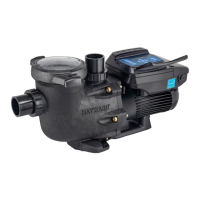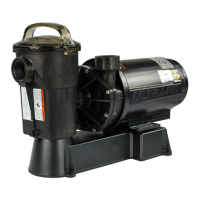IS3206VSP3 Rev-B
Hayward Pool Products
620 Division St, Elizabeth, NJ 07207
Phone: (908) 355-7995
www.hayward.com
2.70 THP VS Pump Family
Owner’s Manual
2.70 THP Variable Speed Pump Family
Hayward’s 2.70 THP variable speed pump family is the industry’s most energy efficient variable
speed pump. The totally enclosed, permanent magnet motor combined with its advanced hydraulic
design provides unparalleled energy savings. This pump is easily installed either as a
programmable stand-alone pump or with a Hayward or third party controller and features an easy-to-
use digital control interface that can be mounted in four different positions on the pump or removed
and mounted on the wall for total user convenience.
SVRS models provide an added layer of protection from suction entrapment without additional
devices, plumbing or wiring.
Note: To prevent potential injury and to avoid unnecessary service calls, read this manual carefully
and completely.
SAVE THIS INSTRUCTION MANUAL




